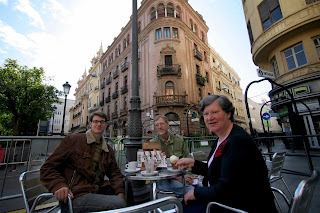
Morning cappuccinos in the square
An astonishing number of mothers with prams were present, which caught my attention because of the absurdity of bringing such a large and cumbersome device to an event this crowded (seriously? Would you walk around a football stadium with a hoola hoop around your waist? Freaking annoying). Also, I thought new parents switched to the baby backpack thing, which frees your hands and eliminates sidewalk hassles? I guess not. Prams: they’re back, make note of it.

Who wants to drag a stroller through this crowd??

Only room for Jesus on these streets
On the topic of Holy Week processions, I was kind of indifferent to seeing it. I thought, well ok it’s so famous it might be fun to see, but then they wear these KKK costumes and I absolutely abhor Catholicism, so…. However I kept myself happily entertained the entire time, taking photos and practicing with my new lens. [Yeah new lens! Sigma 70-200 Macro Zoom!!] It seems like local people are dedicated to keeping this tradition, but that in general there are fewer devotees rushing to the floats and prostrating/kissing the icons like they did even a few years ago. Also, most of the balconies were empty, a shame because they really have the best views.
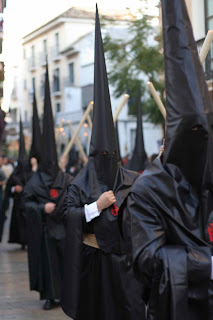
Imagining the Inquisition....
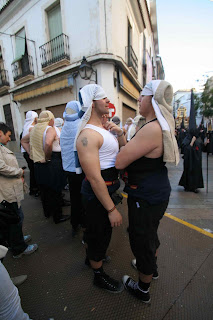
Float bearers sizing each other up
Cordoba has several famous buildings, including the Alcazar and the Mezquita/Cathedral, both grandiose Moorish structures. Outside the Alcazar is a simple park packed full of palm trees, giving the allusion of an oasis, where one of the parade route starts and horse-drawn carriages await tourist to fork out 40 euro for a city loop.

Children collect balls of wax outside the Alcazar
Behind the Alcazar there are immaculately landscaped gardens, fountains and pools, where men snap pictures of their wives and children and families rest under the shade of nearby trees. By this point in the trip I had fallen in love with Moroccan/Spanish elegance—the tiles, flower-filled courtyards, paradisiacal gardens…
.jpg)
View of gardens from the Alcazar tower
.jpg)
That's me in the gardens!
I think I can appreciate Mexican architecture a bit more (certainly their food! Where’s the spice??), but I’d like to see more of the cultural chain upwind, to learn about what influenced Morocco (must trace back to the Umayyad Caliphate at least). Maybe we’ll swing through Damascus on our soon-to-depart bike voyage…?
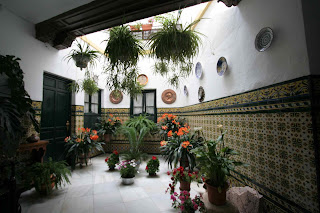
Typical Spanish courtyard, I hope to someday return for the Cordoba Patios Festival when the courtyards become a public artwalk...!
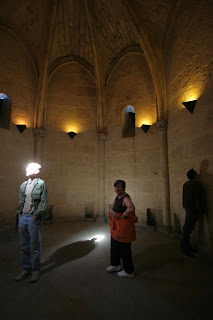.jpg)
By far the funniest picture of Team Hassler (inside the Alcazar)

About to tuck in to some delicious Andalusian soups, gazpacho (cold tomato) and ajoblanco (white almond), but enjoying mugs of sangria for now...
The enormous and uniquely designed Mezquita/Cathedral remains in the heart of the city, surrounded by a maze of narrow alleyways, restaurants and trinket-filled shops. Inside the Mezquita (The Great Mosque) is full of dizzying rows of red and white stripped arches, an entirely unique décor from the Islamic world.
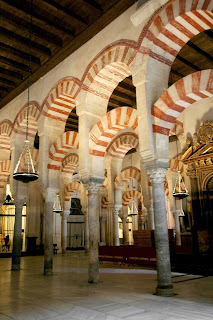
Time-worn arches...

Juxtaposing Islamic and Christian decor
After the Umayyads fell from power in and around Cordoba (circa 11 century), the mosque was converted to a cathedral, so that both faiths can be seen to juxtapose against one another at every turn. Oddly enough, we arrived late in the afternoon and were barred entrance because of a “leetel problem” (as told by one of several police officers arriving suddenly); the next day we learned that a large group of Muslims organized a massive prayer group inside the mosque, but I don’t think they got to see it through.

The Mezquita/Cathedral is enormous... and apparently heavily guarded
One of the inspirations to visit Spain was to meet up with Arlene’s good friends, Enrique and Paqi, and their daughter, Maria. They have been friends for many years, but it’s been years since the Hasslers have gone to visit (maybe even since the last time they took the boys to celebrate Holy Week). They welcomed us to their home and served us delicious homemade Spanish foods like tortillas (actually a potato omelet) and sangria (sold in bottles, like Coke and Fanta!).

I'm amazed Americans can fit through Spanish doorways

Easter picnic with Enrique, Paqi, Maria, and Raul
We met them for several meals, including a picnic, dinner near the Alcazar, a seafood lunch, and for a trip to the archeological park outside of Cordoba, palace of the once-thriving Umayyad Caliphate. The remains are only ruins, but the museum is full of interactive digital TVs that illustrate maps of the history of the Islamic Empire in Spain, how the palace was built, and recreations of what it looked like centuries ago.
Once the setting for the Umayyad Caliphate of Cordoba, Medina Azahara

Tom and Chris among the moorish ruins of Medina Azahara, outside Corboda
Each night leading up to Easter Cordoba’s streets flood with people; families, tourists, float-bearers, band members, costumed marchers from the parish, etc. Maria’s boyfriend, Raul, told us that each neighborhood’s church is assigned a time slot where they can parade their float through the crowd, all ending up at the central square. Chris and I spent the evenings wandering, photographing and sketching, and sometimes indulging in mint chocolate ice cream cones while drinking in the scenes.

Night time view from Tom and Arlene's room
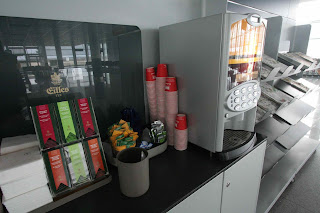.jpg)
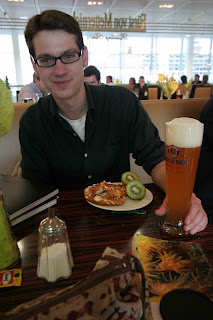.jpg)
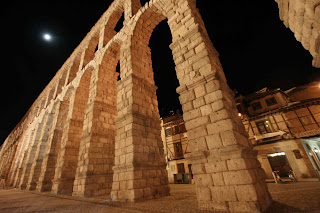.jpg)



.jpg)
.jpg)
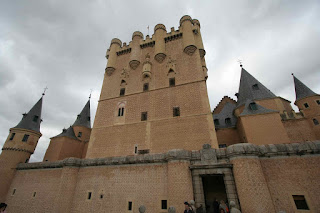.jpg)
.jpg)
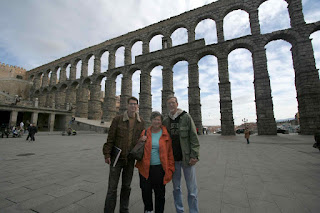.jpg)
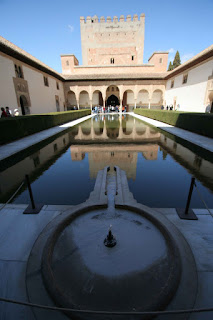.jpg)
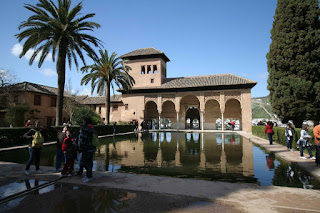.jpg)
.jpg)
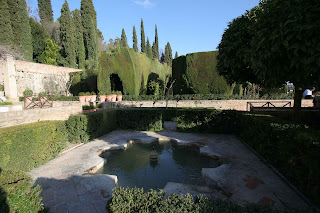.jpg)
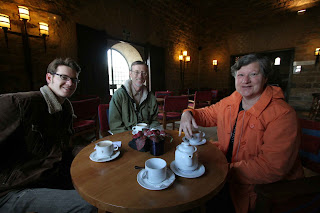.jpg)
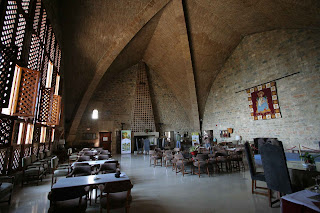.jpg)
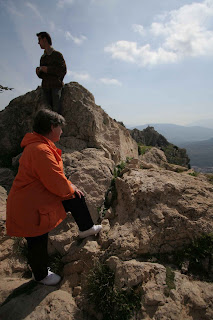.jpg)